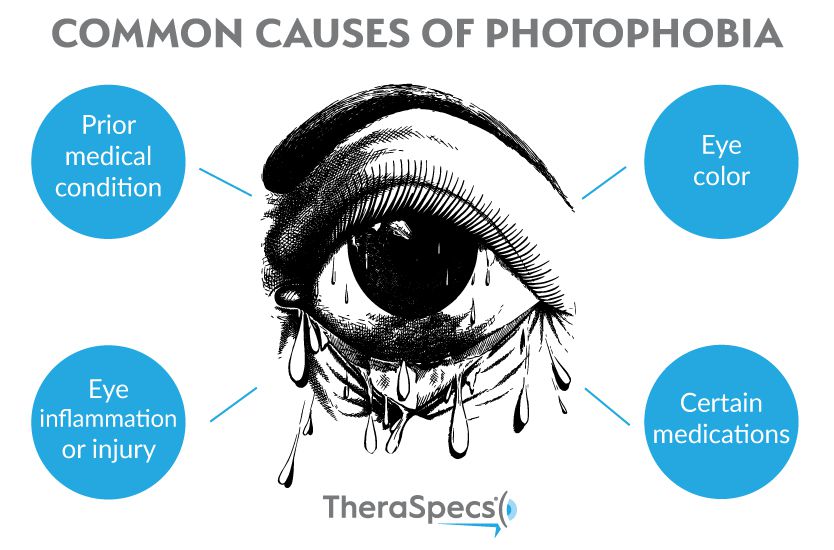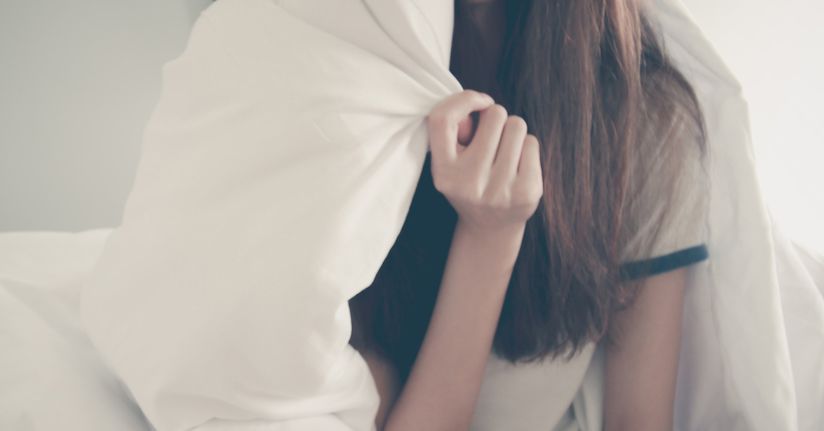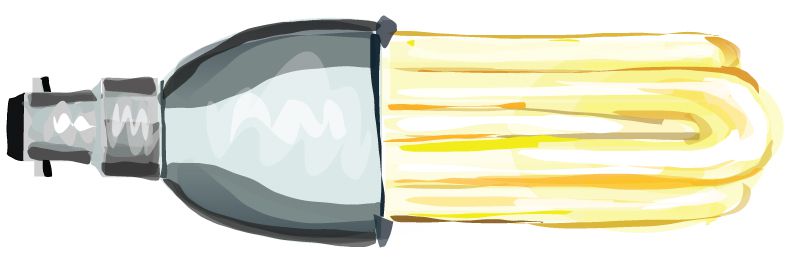
Written by Greg Bullock
First published on September 17, 2017; last updated November 8, 2018
It is likely that we all have experienced discomfort from light. Maybe it stemmed from staring too long at a computer screen or emerging from a darkened place into the bright sunshine. This light sensitivity is often referred to as photophobia by medical professionals, and, for many, it can go away quickly. But for others, photophobia can be a persistent symptom of a diagnosed medical condition such as migraine, post-concussion syndrome or dry eye.
In this comprehensive guide, we take a close look at photophobia and light sensitivity as a medical symptom as well as identify known causes and treatments.
Contents
I. What is photophobia
II. Why does photophobia occur
III. Conditions that cause photophobia
IV. Other causes
V. Symptoms and side effects
VI. Types of light that affect photophobia
VII. Impact of photophobia
VIII. Treatment options
What is photophobia?
You are probably familiar with the term ‘phobia,’ which generally describes a ‘fear’ of something. In this sense, photophobia can literally mean a ‘fear of light,’ but in reality photophobia refers to a strong sensitivity to light. Not a condition in and of itself, photophobia or light sensitivity is a symptom of dozens of other conditions, and it can have different effects for different people. It can be persistent or chronic in some and temporary for others, and it can even cause pain as well but not always.
Why does photophobia occur?
If light hurts when you look at it, the problem must be in the eye, right? While that seems logical, photophobia is actually a neurological issue that involves communication between the eye and the brain. The part of the eye that transmits photophobia to the brain is different from the part that transmits vision. Amazingly, a person can be completely blind and still be sensitive to light, although if a person’s eyes have been removed, they will no longer have photophobia.1

More recently, researchers have hypothesized that fluctuations in specific chemicals which control pain and pleasure in the brain may also contribute to photophobia responses—at least for individuals who have migraine or headache disorders.2 Regardless, there is mounting evidence of the biological roots of painful sensitivity to light—something that hopefully will continue with future investigations.
Conditions that cause photophobia and light sensitivity
There are more than 50 medical conditions that involve photophobia as a prominent symptom, with dry eye being most commonly associated with sensitivity to light. Some of these conditions include:
- Albinism
- Autism spectrum disorders
- Dry eye
- Blepharospasm
- Concussion and post-concussion syndrome
- Traumatic brain injury
- Depression
- Meningitis
- Functional neurological / conversion disorder
- Lyme disease
- Glaucoma
- Fibromyalgia
- Migraine
- Chronic headache disorders (e.g. cluster headache)
- Sjogren’s syndrome
- Corneal and retinal diseases
Video courtesy of Canadian Association of Optometrists
In this next section, we take a deeper look at how photophobia impacts some of the more prominent conditions on this list.
Migraine
After headache or head pain, light sensitivity is the most prevailing symptom of migraine—affecting approximately 90% of individuals with the headache disorder. In fact, it is one of the distinguishing diagnostic criteria for the condition. Moreover, photophobia is common at all stages of a migraine attack, from the aura phase through the postdrome (or post-attack) period. People with migraine generally have been shown to have a lower threshold for bright light as well as greater photophobia between attacks as well.3 Some research has even suggested that there may be a seasonal component to migraine-related light sensitivity.4 Read more about the connection between migraine and photophobia.
Dry eye disease
Dry eye disease is one of many eye-specific conditions that can result in photophobia, and it is the most frequent cause of the symptom. Three out of four individuals diagnosed with dry eye have reported painful light sensitivity with nearly 40% of these cases rated as severe. In addition, dry eye patients with persistent photophobia experience less relief with artificial tears, a common remedy for the ocular disorder.5
Concussion, post-concussion syndrome and traumatic brain injury
Photophobia is the second most prevalent symptom after headache reported by post-concussion syndrome or traumatic brain injury patients. Experts have suggested that it may affect more than 40% of post-concussion patients and 50% of those who have suffered a traumatic brain injury or TBI, although those numbers may actually be higher than what has been documented.6 While photophobia may dissipate within a few weeks after a concussion, it can last for several months or indefinitely depending on several factors—such as severity of brain trauma, existence of prior injuries, or improper treatment. Veterans with TBI or post-concussion syndrome have proven to be a particularly vulnerable population and, as a result, may experience photophobia at greater rates than civilians with a similar condition.
Fibromyalgia
For individuals with a chronic pain disorder, such as fibromyalgia, there is also a significant chance that they experience photophobia and light sensitivity. One study showed that as many as 70% of fibromyalgia patients displayed photophobic pain responses to light exposure, compared with just 6% of people who were not diagnosed with FM.7 A few hypotheses have emerged as to the link between light sensitivity and fibromyalgia. Many FM patients are already likely to have dysfunction in how they process external stimuli such as touch, sound and light—this is a primary cause or trigger of pain and flares. In addition, fibromyalgia also has a tendency to be comorbid with other neurological conditions such migraine, which is inherently associated with greater levels of painful sensitivity to light.

Other causes of light sensitivity
In addition to known conditions that lead to photophobia such as migraine and post-concussion syndrome, there are other potential causes. For example, certain medications list light sensitivity or photophobia as a side effect; these might include prescription drugs that are designed to treat other conditions such as diabetes (Diabinese), epilepsy (Dilantin), erectile dysfunction (Viagra) or even chemotherapy medications.8 In addition, if there is a previous eye injury or inflammation or a person has recently undergone eye surgery, sensitivity to light can be a frequent side effect.
There are also behavioral causes that can bring about photophobia, such as avoiding light altogether. Just as your eyes can be sensitive after emerging from a darkened movie theater, continually wearing sunglasses indoors or hiding in a dark room (both regular practices for people who already have photophobia) can make light sensitivity a chronic problem over time. The opposite is true as well: inappropriate or long-term exposure to bright light can also cause photophobia. For example, research has shown that the cumulative effect of bright sunlight can lead to pain for a person with migraine.9 In addition, staring too long at the sun or other artificial light sources can cause damage to the surface and/or retina of the eye—both of which can ultimately make a person sensitive to light. And it may or may not be temporary.
Believe it or not, experts have even reported that the color of your eye may determine your chances of becoming sensitive to light-related stimuli. Specifically, they noted that if a person’s eyes are a lighter color (such as blue eyes) then there is less pigment to block bright or harsh light—making them inherently more sensitive than dark colored eyes.
Photophobia symptoms and side effects
There are both physical and emotional side effects related to photophobia. Some of the physical symptoms of light sensitivity include:
- Eyestrain and squinting
- Eye pain
- Headache or migraine attack
- Intolerance of light, especially fluorescents
- Inflammation
- Excessive blinking
- Watery eyes
- Vertigo or dizziness
Recent studies have shown that light exposure for a person who is already sensitive may also yield additional consequences, including: nausea, shortness of breath, chest tightness, and lightheadedness.10 And, as a person with photophobia knows, these feelings and responses can happen within seconds or minutes.

The emotional issues associated with photophobia are equally important to understand. Not only is there evidence that exposure to light increases negative emotions (such as anger, fear and depression) for light-sensitive individuals, but studies continue to reinforce that chronic photophobia increases the likelihood of developing anxiety and other psychiatric disorders—regardless of condition. Other emotional symptoms a person should watch out for include:
- Irritability
- Mood swings
- Aggression
- Hopelessness
- Depression
Types of light that affect photophobia
Does certain light trigger or worsen photophobia? The answer is a resounding yes! Fluorescent lighting, sunlight and computer or mobile device screens can make things worse for someone with light sensitive eyes. Fluorescent lights have been shown to double incidences of headaches and migraine attacks among office workers, and they are a repeatedly cited as an issue for patients with a history of traumatic brain injury.11 Similarly, a mere 5 to 10 minutes of exposure to sunshine can be painful for a person with a persistent sensitivity to light, according to research. Moreover, post concussion syndrome patients have reported issues with the light associated with LED and LCD screen use from computers or mobile devices. And there are countless more anecdotes that these sources are prime triggers for photophobia, regardless of the underlying condition.

But here is the dirty little secret: any light has the capability to aggravate photophobia in a person who is already sensitive. But why is that? Well, there may be several reasons:
Brightness of light: Not only is the luminance of a particular source of light important—as many as 67% of migraine patients have cited brightness as a trigger—but research continues to validate that photophobic patients (regardless of condition) have a lower tolerance for all light.3 So what may not seem bright to you or me could bring about pain for a person with light sensitivity.
Flickering and flashing light: High visual contrast—such as flashing or malfunctioning lights that quickly go from bright to dark—is another concern for people with photophobia. Striped patterns are also known to be triggers for people with light-sensitive epilepsy as well as migraine. And some issues may not even be visible to the eye. Fluorescents specifically have an invisible flicker that is inherent to how they work. It may not be seen by the naked eye, but is picked up by the brain and is a likely cause of headaches, seizures, migraine attacks, eyestrain and light sensitivity.
Color or wavelength of light: Blue light has proven to be a major health problem, especially given its presence in our electronic device screens, fluorescents and other artificial lighting. But did you know it is also in sunlight and other natural lighting as well? The fact is it is everywhere, and it can be a major pain. For instance, migraine and other headache disorders are more likely to experience worsening attacks and head pain after being subjected to specific wavelengths of blue light.12
The impact of photophobia
Somebody with temporary light sensitivity may not experience major disruptions, and the issue itself may resolve within a few minutes or hours. But for people with more severe photophobia, there is often a significant impact in their daily lives. Although minimal quantifiable data exists, there are millions of people who live with this painful symptom, and some studies have revealed that at least 25% of people believe their light sensitivity has had a notable impact on their quality of life (we believe that number to be higher though). A recurring theme from photophobic patients is the idea of returning to a "normal" life. Sensitivity to light can incite anxiety in people such that they avoid situations or activities that could trigger it: going into grocery stores or shopping malls, engaging in outdoor activities, attending concerts, sporting events, etc.—the list goes on and on.
Often, the extreme of this is retreating into complete darkness. It’s why people who experience this painful sensitivity often refer to themselves as vampires who are forced to shun the light that hurts so much.

Twitter users often share the pain of light sensitivity
In addition, the social stigma of chronic and invisible illness is equally felt. This can affect personal relationships with family and friends over missed activities or a misunderstanding of the condition. And it also can impact professional obligations. Not only do people have to manage the physical pain of photophobia in the workplace, but they may experience a decline in productivity or choose to leave their job entirely. It is why there are high instances of disability associated with chronic conditions like migraine. In extreme cases, photophobia and the conditions that cause it have led to job demotions or firings.
Photophobia and Light Sensitivity Treatments
Unfortunately there are no specific medications that directly address photophobia and painful light sensitivity; in fact, as noted above, there are some that actually make it worse. Thus, treating photophobia is not as simple as we might like, but there are remedies that can help. Just check out what advocate Lisa from migraine.com recommends for treating light sensitivity.
The first thing you have to do is treat the underlying condition or issue. Whether it is eye inflammation, migraine or TBI, you want to make sure you target what is causing the photophobia. Not only will this rule out more serious concerns, but research has also shown that treating the underlying health problem can help reduce overall symptoms and pain associated with light sensitivity.
Other general relief options for photophobia include:
- A dark room for severe light sensitivity
- Eye rest and relaxation
- Wearing a hat indoors
- Polarized and UVA/UVB blocking sunglasses for outdoor use
- Reducing screen time from electronics
- Installing screen filter apps for your phone and computer and other mobile friendly tips
- Replacing broken or flickering light fixtures
- Removing fluorescent light bulbs
- Utilize warm or natural light at home or in the office
- Wearing precision-tinted indoor glasses

You may be asking: "Wait a minute… there are glasses designed specifically for people with photophobia?" Indeed, special photophobia glasses—like those from TheraSpecs—utilize a precision tint to filter the most painful wavelengths of light for sensitive individuals. These lenses specifically target the blue light that is prevalent in fluorescents, device screens, sunlight, and other sources, and research supports their effectiveness for providing relief. Not only do they reduce fluorescent light sensitivity and general photophobia, but migraine patients have experienced a 74% reduction in light-triggered attacks as well.13,14 Ultimately you can feel better in the light, just like the thousands who have already tried them. No need to hide in the dark, no unfortunate side effects from medication—just effective photophobia relief.
Other posts about photophobia
Home Remedies for Photophobia and Light Sensitivity
4 Ways Blue Light Impacts Your Eyes and Brain
How Migraine Attacks Can Be Triggered or Worsened by Light
What Causes Sudden Light Sensitivity?
Fluorescent Light Sensitivity: Causes, Symptoms & Solutions
References:
1 Noseda R, Burstein R. Advances in understanding the mechanisms of migraine-type photophobia. Current Opinion in Neurology. 2011;24:197-202.
2 DaSilva AF, Nascimento TD, Jassar H, Heffernan J, Toback RL, Lucas S, DosSantos MF, Bellile EL, Boonstra PS, Taylor JMG, Casey KL, Koeppe RA, Smith YR, Zubieta JK. Dopamine D2/D3 imbalance during migraine attack and allodynia in vivo. Neurology. 2017 Apr 25;88(17):1634-1641. doi: 10.1212/WNL.0000000000003861. Epub 2017 Mar 29.
3 Digre KB, Brennan KC. Shedding Light on Photophobia. Journal of neuro-ophthalmology : the official journal of the North American Neuro-Ophthalmology Society. 2012;32(1):68-81. doi:10.1097/WNO.0b013e3182474548.
4 Bekkelund, S. I., Müller, K. I., Wilhelmsen, A. and Alstadhaug, K. B. (2017), Photophobia and Seasonal Variation of Migraine in a Subarctic Population. Headache: The Journal of Head and Face Pain. doi:10.1111/head.13131.
5 Galor A, Levitt R, Felix E, Sarantopoulos C. What can photophobia tell us about dry eye? Expert Review of Ophthalmology Vol. 11, Issue 5, 2016.
6 University Health Network (UHN). "Non-LCD technology shows promise for return to work/school for postconcussion syndrome sufferers." ScienceDaily. ScienceDaily, 27 July 2017.
7 Watson NF, Buchwald D, Goldberg J, Noonan C, Ellenbogen RG. Neurological Signs and Symptoms in Fibromyalgia. Arthritis and rheumatism. 2009;60(9):2839-2844. doi:10.1002/art.24772.
8 Jeffrey R. Anshel, OD. Medications That Hurt Your Eyes. 8 Sept 2015. Retrieved from: http://irlen.com/medications-that-hurt-your-eyes/
9 Hoffmann J, Recober A. Migraine and triggers: Post hoc ergo propter hoc? Current pain and headache reports. 2013;17(10):10.1007/s11916-013-0370-7. doi:10.1007/s11916-013-0370-7.
10 Rodrigo Noseda, Alice J. Lee, Rony-Reuven Nir, Carolyn A. Bernstein, Vanessa M. Kainz, Suzanne M. Bertisch, Catherine Buettner, David Borsook, and Rami Burstein Neural mechanism for hypothalamic-mediated autonomic responses to light during migraine PNAS 2017 : 1708361114v1-201708361.
11 Wilkins A, Veitch J, Lehman B. LED lighting flicker and potential health concerns: IEEE standard PAR1789 update. Energy Conversion Congress and Exposition 2010;171-178.
12 Tatsumoto M, Eda T, Ishikawa T, Ayama M, Hirata, K. Light of intrinsically photosensitive retinal ganglion cell (ipRGC) Causing Migraine Headache Exacerbation. International Headache Congress Symposium OR3. 2013 June.
13 Good PA, Taylor RH, Mortimer MJ. The use of tinted glasses in childhood migraine. Headache. 1991 Sep;31(8):533-6.
14 Wilkins AJ, Wilkinson P. A tint to reduce eye strain from fluorescent lighting? Preliminary observations. Ophthalmic Physiol Opt. 1991 Apr;11(2):172-5.
About Greg Bullock:
Greg Bullock is the Marketing Manager for TheraSpecs, where he is committed to helping improve the lives of patients with photophobia and light sensitivity through quality products and awareness. He has written extensively about light sensitivity for the U.S. Department of Veterans Affairs (VA), Migraine Again and The Mighty online.



